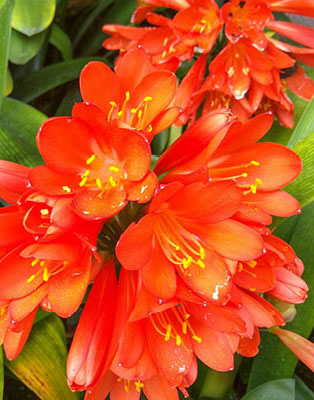Clivias are known for their vibrant splash of colour earmarking the start of spring. Here’s how to be rewarded with their beautiful blooms
Composting and gardening expert, John Kidger, from Farmyard Organics sheds some light on how to grow clivias:
Location
Clivias should be planted in areas of light shade as they don’t do well in direct sunlight. They grow especially well in beds under trees as the fallen leaves from the trees act as natural mulch.
“Clivias don’t like frost or other extreme conditions, so in areas prone to extremes plant them under evergreen trees to limit the risk of frost damage,” says Kidger.
Feeding
Clivias get abundant nutrients from the thick layer of leaves that cover the ground, which means that they never have to send their roots deep into the soil. They therefore need soil high in organic matter or compost, with high levels of potash and phosphate, as well as a humid soil conditions.
“The good news is that spring or early summer are the best times for planting clivias, so prepare your beds now. For older plants, use Cliviamix and bone meal as a feed, especially when they near their flowering season, around early to mid-September,” says Kidger.
Watering
Most clivia varieties flower during spring and early summer, three to four years after planting. “To make sure that you don’t have a dull start, don’t over-water them,” advises Kidger. He suggests only watering once a week during the growing season and even less during the rest of the year.
For more information on composting and gardening advice visit farmyardorganics.co.za

